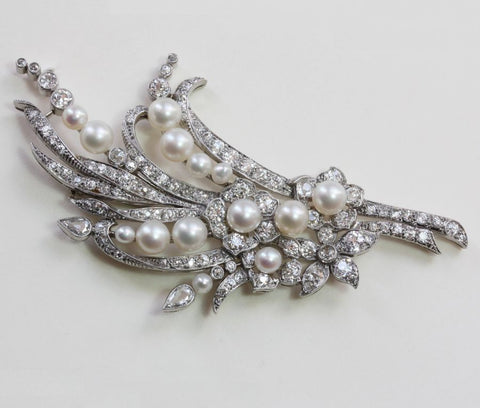

The Edwardian era spanned from 1890 until 1914 and, much like its predecessors, was named after England's King Edward VII. It was a time of increasing prosperity and when people broke free from the conservative nature of the Victorian era prior. Edward and his wife Alexandra were trendsetters with a love for lavish opulent jewellery! With the massive popularity of the royals, their trends caught on like wildfire and made a lasting impact on the jewellery industry that can still be recognized to this day.

A Brief History
Known to the rest of Europe as “La Belle Epoque (The Good Times)”, The Edwardian era was a time of celebration and frivolity for the upper classes. Led by King Edward VII and his wife Alexandra, their love of opulent jewellery was infectious among society, and was often put on display at the many balls and parties that they threw. Their own personal styles began to influence the jewellery industry, as the royal’s fashion often did! Equestrian-inspired pieces became immensely popular due to Edward's love for horse racing, and every woman in high society wanted a collar-style necklace like the ones Alexandra was so famous for. This fashionable duo ruled together until King Edward's death in 1910. When WWI began in 1914, the war efforts put an end to the frivolity of the era as much of the precious metal that was used for jewellery at the time was instead being diverted to the war.



Popular Styles
The Edwardian era sparked the birth of platinum being used in the jewellery industry, with Cartier being one of the front-running companies to start using it first. The incredible strength of platinum in comparison to gold made creating delicate and intricate lace-like patterns possible and gave jewellery a soft feminine look. Another well-known style that first became popular during the Edwardian era was milgrain. This decorative technique was made possible by using platinum in jewellery, and features tiny beads and ridges surrounding a gemstone or along the edge of jewellery to give it a softer look.


Common motifs of the era included clovers, stars, hearts, bows, garlands, and flowers. Filigree detailing also became incredibly popular, further adding to the soft feminine style that was so popular! Edwardian jewellery was created to complement the white silk and lace worn by ladies of high society at the time. In addition to diamonds and natural pearls, stones such as amethysts, peridots, blue sapphires, aquamarines, alexandrites, moonstones and rubies were often used.


Before Alexandra was married to King Edward, she spent 38 years as the Princess of Wales. During both of her reigns, she became an influential figure in fashion and popularized one of her favourite pieces of jewellery, the choker necklace. Rumour had it, she chose this style of necklace to hide a scar she had on her neck though it has never been proven. These tight-fitting necklaces ranged from elaborately pierced platinum gossamer designs in a garland motif to simple black velvet or ribbons with buckles, flowers, and other designs at the centre. Sometimes the ribbon was replaced by multiple strands of pearls, often set with diamond detailing.

"White on white" jewellery had also become an increasingly popular trend of the era, with many pieces featuring clear or colourless stones as well as white pearls to give an ethereal look. This trend even worked its way into the mourning jewellery of the time! White and black became the new colours of mourning, not just the dark reds and black of eras prior. Mourning jewellery was often made of platinum and onyx. The use of platinum gave a light, and airy look to the jewellery and the popularity of platinum lasted until the beginning of World War I. Platinum was needed for the manufacture of weapons and therefore was no longer available to be used in jewellery. The beginning of the war marked the end of the Edwardian era and its love for opulence and the extravagant.
Want to add some Edwardian jewellery to your collection? Take a look at our selection on 100 Ways!











